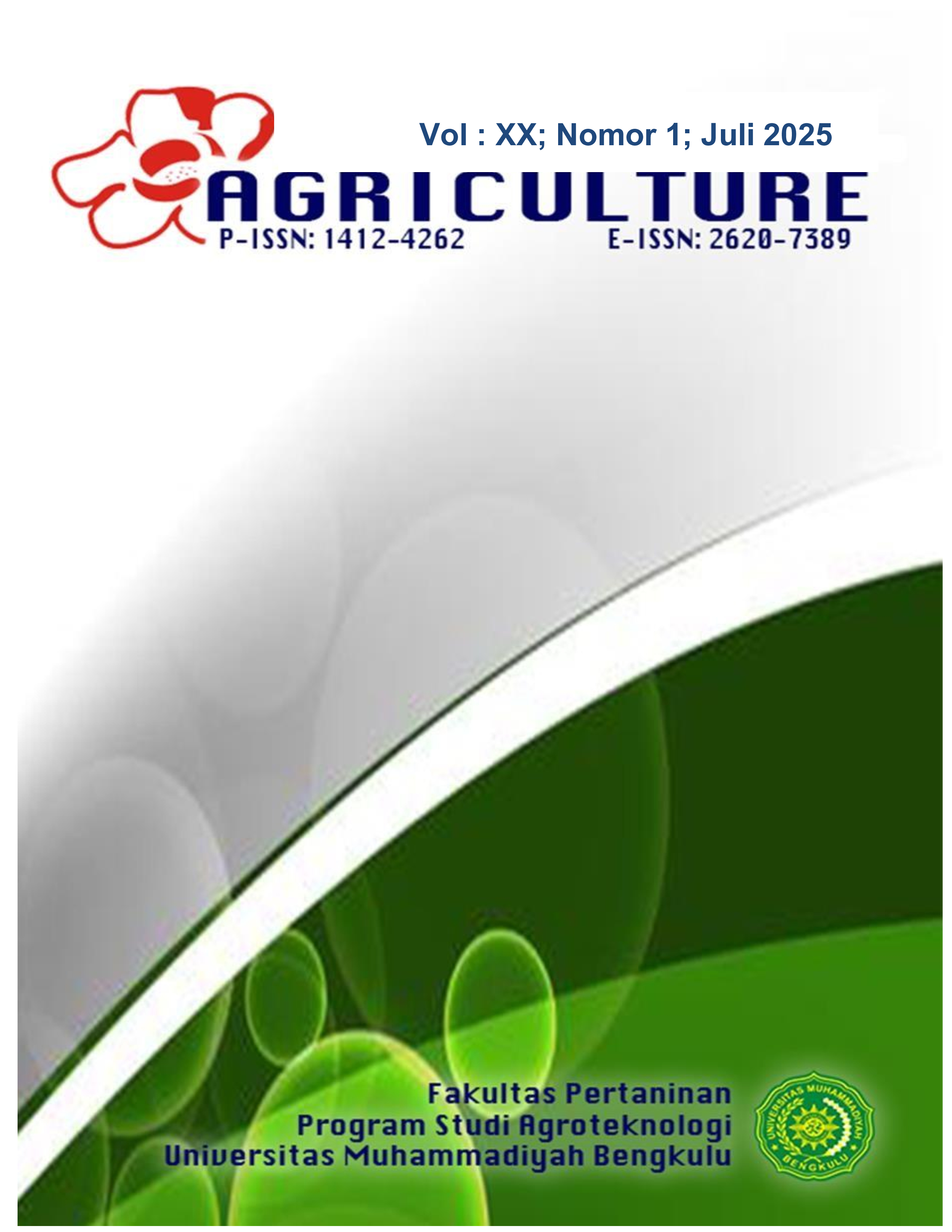KARAKTERISTIK PERKECAMBAHAN DAN KADAR FLAVONOID DALAM EKSTRAK SORGUM VARIETAS SUPER 1 PADA BERAGAM TINGKAT CEKAMAN KEKERINGAN
Karakteristik Perkecambahan dan Kadar Flavonoid dalam Ekstrak Sorgum Varietas Super 1 pada Beragam Tingkat Cekaman Kekeringan
DOI:
https://doi.org/10.36085/agrotek.v20i1.7633Abstract
Allelopathy-based bioherbicides for drought-stressed sorghum plants are a concrete step towards sustainable agriculture. The aim was to identify the germination characteristics of sorghum seeds and flavonoid levels in their extracts at various levels of drought stress. Extract materials were prepared from June to August 2024 at Bengkulu University Greenhouse, Kandang Limun Village, Bengkulu City, and bioassay tests were conducted in August 2024 at Pematang Gubernur, Muara Bangkahulu, Bengkulu City. Flavonoid analysis was performed at the Integrated Research and Testing Laboratory (LPPT) of Gadjah Mada University in August 2024. This research used a completely randomized design (CRD) with one factor. One sorghum variety, Super 1, was planted with water stress treatment through watering patterns every day, every 2 days, every 3 days, every 4 days, and every 5 days. The experimental unit was a petri dish, and the experiment was repeated four times. The Petri dish bioassay method was applied in this experiment. Each petri dish was given 10 mL of aqueous extract, and 25 mung bean seeds were planted and incubated for three days. The results showed that the watering pattern achieved the highest flavonoid content every 4 days (4121.00 µg/g), and the second highest flavonoid content was Super 1 + every 5 days. The once every 5 days watering pattern achieved the highest sprout inhibition. The higher the level of stress, the higher the level of inhibition of seed germination, so it has the potential to be the best bioherbicide.











